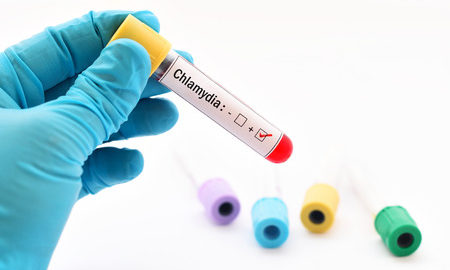Stem Cell Technologies Help Discover New Targets for Chlamydia Drugs

Researchers at the University of British Columbia and the Wellcome Trust Sanger Institute have collaborated to create a novel technique that will allow scientists to observe the interaction of chlamydia with the immune system in humans.
Chlamydia Trachomatis: An Overview
Chlamydia is a common sexually transmitted infection. More than 130 million people are infected with chlamydia each year. This so-called “silent disease” does not produce any early symptoms, but without treatment may lead to PID (pelvic inflammatory disease) and infertility.
In 2016, the World Health Organization issued new guidelines for the treatment of chlamydia, keeping in mind the increasing resistance of infectious agents to antibiotics. With this in mind, scientists are trying to develop a deeper understanding of the interaction between chlamydia and the human immune system in order to develop new treatments for the disease.
Stem Cell Technologies Help Discover New Targets for Chlamydia Drugs
Using a combination of stem cell techniques and gene editing tools such as CRISPR, the researchers developed a model to identify two genes (IL-10RA and IRF5) that play key roles in the body’s ability to fight an infection with chlamydia. The findings, described in the journal Nature Communications, point to an innovative method of discovering new targets for STD drugs.
New Research on Chlamydia Drugs
Stem cells have the ability to mature into various types of cells. The team created macrophages (a type of white blood cell) from induced pluripotent stem cells (iPSCs) using the CRISPR/Cas9 gene editing tool. Macrophages play a critical role in the body’s response to chlamydia infection. The iPSC-derived macrophages were studied to observe their response to the disease. The scientists hope to understand how chlamydia spreads by avoiding antibiotics.
In fact, chlamydia is a typically difficult infection to treat on account of its ability to hide inside macrophages and avoid antibiotics. The chlamydia cells multiply inside the macrophage, growing in number from one or two to hundreds in just a couple of days. The infectious cells then burst out of the macrophage and spread the infection. By understanding how chlamydia survives inside macrophages, the researchers hope to develop new therapies that rely on blocking this method of survival and replication.
This is the first time macrophages derived from humans have been used to study chlamydia. Previously, mice models were used and the immune response in these animal models did not completely mimic the human response.
The researchers used gene manipulation to study the interaction between macrophages and chlamydia. As mentioned, two genes (IL-10RA and IRF5) that were previously thought to be uninvolved in infection control were discovered to be key players in the body’s ability to fight chlamydia. In this way, stem cell technologies have helped discover new targets for chlamydia drugs.
References:
- https://www.medicalnewstoday.com/releases/317123.php


